-
 Bitcoin
Bitcoin $108,996.1967
2.65% -
 Ethereum
Ethereum $2,568.0446
5.65% -
 Tether USDt
Tether USDt $1.0004
0.02% -
 XRP
XRP $2.2532
3.07% -
 BNB
BNB $659.8395
1.51% -
 Solana
Solana $153.8915
3.45% -
 USDC
USDC $0.9999
-0.02% -
 TRON
TRON $0.2839
0.92% -
 Dogecoin
Dogecoin $0.1696
6.19% -
 Cardano
Cardano $0.5894
6.83% -
 Hyperliquid
Hyperliquid $39.8845
6.55% -
 Sui
Sui $2.8870
7.43% -
 Bitcoin Cash
Bitcoin Cash $501.4074
-0.52% -
 Chainlink
Chainlink $13.5237
4.68% -
 UNUS SED LEO
UNUS SED LEO $9.0168
0.76% -
 Avalanche
Avalanche $18.6548
7.56% -
 Stellar
Stellar $0.2405
4.66% -
 Toncoin
Toncoin $2.8775
3.34% -
 Shiba Inu
Shiba Inu $0.0...01189
4.74% -
 Litecoin
Litecoin $88.6280
5.55% -
 Hedera
Hedera $0.1560
7.09% -
 Monero
Monero $322.9053
2.78% -
 Polkadot
Polkadot $3.5526
7.23% -
 Bitget Token
Bitget Token $4.5886
2.35% -
 Dai
Dai $1.0000
0.00% -
 Ethena USDe
Ethena USDe $1.0001
0.00% -
 Uniswap
Uniswap $7.3492
12.17% -
 Pepe
Pepe $0.0...01023
9.43% -
 Aave
Aave $274.8468
5.51% -
 Pi
Pi $0.4933
1.06%
What is a UTXO model vs an account model?
The UTXO model tracks unspent transaction outputs for transactions, while the account model updates balances directly, each offering distinct trade-offs in scalability, privacy, and smart contract functionality.
Jul 03, 2025 at 05:43 am
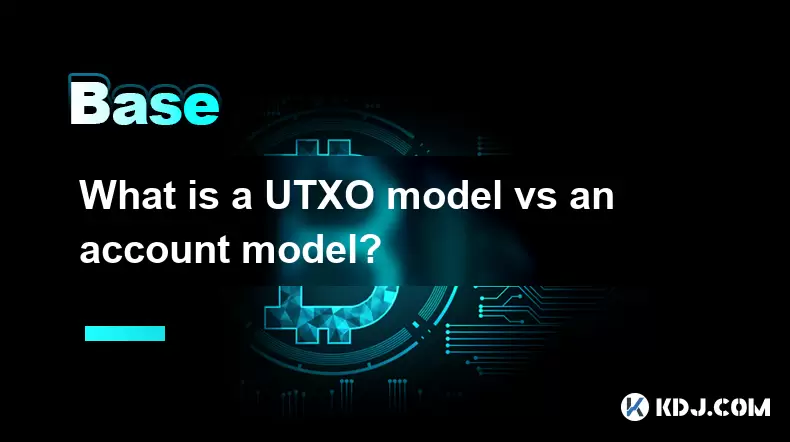
Understanding the UTXO Model
The UTXO (Unspent Transaction Output) model is a fundamental concept in blockchain technology, particularly prominent in Bitcoin and other similar cryptocurrencies. In this model, transactions are structured as inputs and outputs. When a user sends cryptocurrency, they reference previous unspent outputs as inputs and create new outputs that can be spent in future transactions.
Each transaction consumes existing UTXOs and generates new ones. For example, if Alice wants to send 1 BTC to Bob but only has a UTXO of 2 BTC, she will use that UTXO as input and generate two outputs: one for 1 BTC to Bob and another for 1 BTC back to herself as change.
A key feature of the UTXO model is that it does not maintain persistent account balances. Instead, wallets must track all available UTXOs to determine how much a user can spend. This makes transaction validation more complex compared to account-based models, but it also enhances privacy and scalability potential through parallel processing capabilities.
Exploring the Account Model
In contrast, the account model is used by blockchains like Ethereum and many others that support smart contracts. This model resembles traditional banking systems where each address has a balance that gets updated directly with every transaction.
When a user initiates a transfer, the system deducts the specified amount from their balance and adds it to the recipient’s balance. No need exists to track multiple unspent outputs—each account maintains a state that reflects its current funds.
Smart contract execution also operates under this model. Each interaction modifies the state of accounts involved, which simplifies logic for developers when building decentralized applications (dApps). However, this simplicity comes at the cost of potentially slower transaction validation due to sequential processing requirements.
Key Differences Between UTXO and Account Models
- Transaction Structure: The UTXO model relies on transaction inputs and outputs, while the account model updates balances directly.
- State Management: UTXO systems do not store account balances explicitly; instead, they calculate balances by summing all valid UTXOs. Account-based systems keep track of balances persistently.
- Scalability Implications: UTXO allows for parallel transaction processing since each UTXO can be handled independently. Account models often require sequential processing to avoid double-spending or race conditions.
- Privacy Features: UTXO provides better privacy out-of-the-box because it doesn’t expose a single balance tied to an address. Users can manage multiple addresses without revealing their total holdings easily.
These distinctions influence how developers approach application design, network performance tuning, and security considerations within different blockchain ecosystems.
Use Cases and Ecosystem Suitability
Blockchains utilizing the UTXO model are typically well-suited for scenarios where high throughput and enhanced privacy are priorities. Bitcoin’s design benefits from UTXO’s ability to handle large volumes of simple peer-to-peer transactions efficiently.
On the other hand, platforms using the account model, such as Ethereum, excel in environments requiring frequent state changes and complex interactions between accounts and smart contracts. Developers find it easier to implement conditional logic and multi-step processes when working with persistent account balances.
Some newer blockchains attempt to combine aspects of both models to optimize for specific use cases. For instance, certain protocols may layer account-like abstractions over a UTXO foundation to enable smart contract functionality without sacrificing scalability entirely.
Technical Implementation Considerations
Implementing either model requires careful consideration of trade-offs:
- Storage Requirements: The UTXO set can grow significantly over time, especially if users frequently transact small amounts, leading to many fragmented UTXOs. In contrast, the account model stores fewer records but must update them more frequently.
- Validation Complexity: Verifying a UTXO transaction involves checking that all referenced inputs are unspent and valid. For account-based systems, validation includes ensuring sufficient balance and correct nonce usage.
- Concurrency Control: The UTXO model supports higher concurrency because transactions spending different UTXOs don't interfere with each other. The account model often needs locking mechanisms or optimistic concurrency control to prevent inconsistencies during simultaneous access.
Developers must weigh these factors when choosing or designing a blockchain protocol tailored to their application's requirements.
Frequently Asked Questions
What determines whether a blockchain uses UTXO or an account model?
The choice depends on the intended use case, scalability goals, and development preferences. UTXO is preferred for systems prioritizing throughput and privacy, while account models suit platforms emphasizing programmability and state transitions.
Can a blockchain switch from UTXO to an account model or vice versa?
Technically, it's possible through a hard fork or layered abstraction, but doing so would require significant architectural redesign and could impact compatibility with existing tools and infrastructure.
Do UTXO-based blockchains support smart contracts?
Yes, some UTXO-based blockchains like Cardano and Ergo have implemented smart contract capabilities by extending the UTXO model with additional logic, although the approach differs from Ethereum-style account models.
How does wallet management differ between UTXO and account models?
Wallets on UTXO chains must manage individual UTXOs for efficient transaction creation, while account-based wallets primarily track balances and nonces.
Disclaimer:info@kdj.com
The information provided is not trading advice. kdj.com does not assume any responsibility for any investments made based on the information provided in this article. Cryptocurrencies are highly volatile and it is highly recommended that you invest with caution after thorough research!
If you believe that the content used on this website infringes your copyright, please contact us immediately (info@kdj.com) and we will delete it promptly.
- Meme Coin Mania: Is BTC Bull the Next Big Thing in a Limited Time BTC Bull Run?
- 2025-07-03 12:30:11
- Bitcoin Soars to $109,000: What's Fueling the Crypto Rally?
- 2025-07-03 10:30:13
- Splatterhouse Rocks Retro Scene: A UK Magazine Deep Dive
- 2025-07-03 12:30:11
- Bitcoin, the Senate Bill, and $107K: A Wild Ride on Capitol Hill
- 2025-07-03 12:50:11
- Chainlink's Chart Patterns Hint at a Big Move: Decoding the LINK Price
- 2025-07-03 10:50:12
- Shiba Inu, Solana Uptrend, Bitcoin Breakout: Decoding the Crypto Buzz
- 2025-07-03 10:50:12
Related knowledge
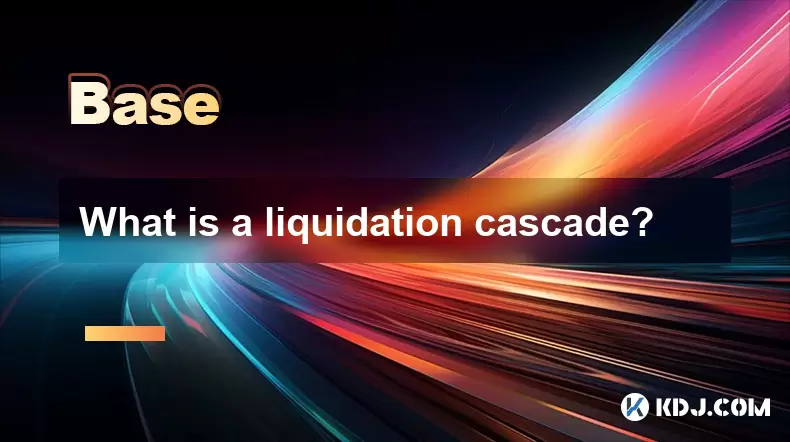
What is a liquidation cascade?
Jul 03,2025 at 07:15am
Understanding the Concept of LiquidationIn the realm of cryptocurrency trading, liquidation refers to the process by which a trader's position is automatically closed due to insufficient funds to maintain the leveraged trade. This typically occurs when the market moves against the trader's position and their account equity falls below the required maint...
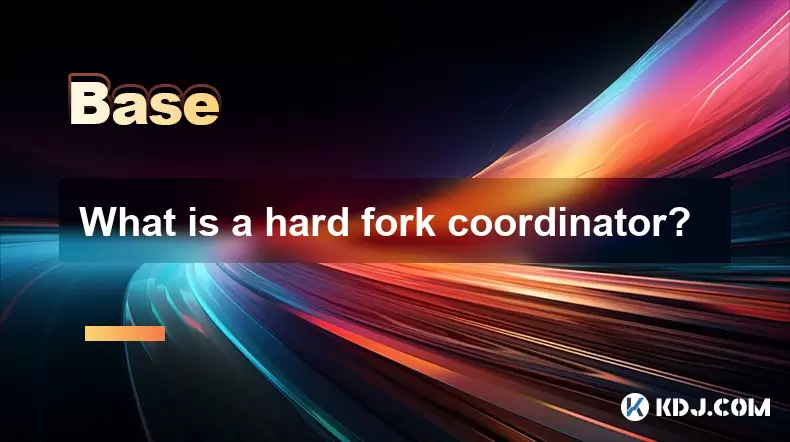
What is a hard fork coordinator?
Jul 03,2025 at 12:42pm
Understanding the Role of a Hard Fork CoordinatorIn the world of blockchain and cryptocurrencies, a hard fork coordinator plays a critical role during major network upgrades. A hard fork is a significant change to a blockchain’s protocol that makes previously invalid blocks or transactions valid (or vice versa). This type of upgrade requires all nodes o...
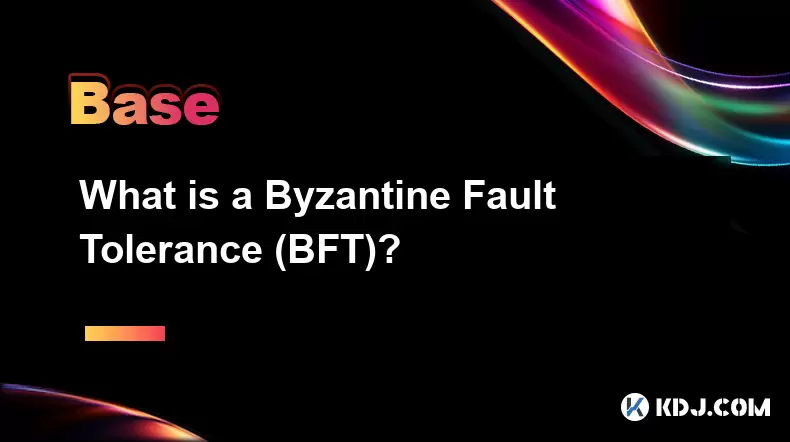
What is a Byzantine Fault Tolerance (BFT)?
Jul 03,2025 at 11:49am
Understanding the Concept of Byzantine Fault ToleranceByzantine Fault Tolerance (BFT) is a critical concept in distributed systems, particularly within the realm of blockchain technology and cryptocurrencies. It refers to the ability of a system to continue functioning correctly even when some components fail or behave maliciously. The term originates f...
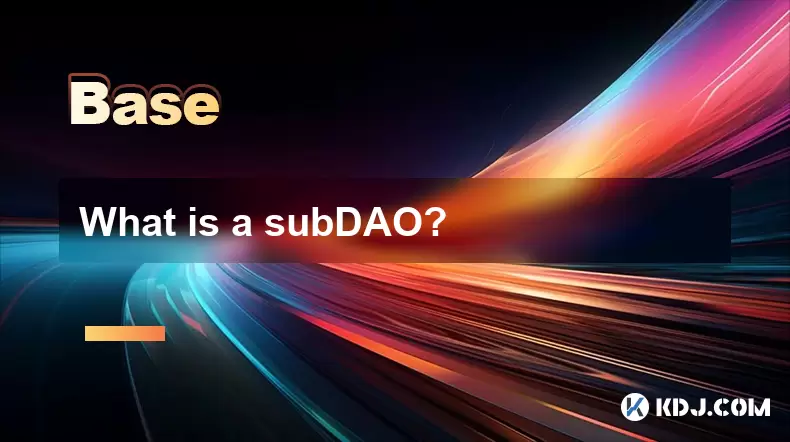
What is a subDAO?
Jul 03,2025 at 09:36am
Understanding the Concept of SubDAOA SubDAO, short for Sub-Decentralized Autonomous Organization, is a specialized entity that operates under the umbrella of a larger DAO (Decentralized Autonomous Organization). It functions with its own set of rules, governance mechanisms, and tokenomics while remaining aligned with the overarching goals of the parent ...

What is the Travel Rule in crypto?
Jul 03,2025 at 10:28am
Understanding the Travel Rule in CryptocurrencyThe Travel Rule is a regulatory requirement initially introduced by the Financial Action Task Force (FATF) for traditional financial institutions. It has since been extended to cryptocurrency transactions, especially those involving Virtual Asset Service Providers (VASPs). The core purpose of this rule is t...

What is undercollateralized lending?
Jul 03,2025 at 12:14pm
Understanding the Basics of Undercollateralized LendingUndercollateralized lending refers to a type of loan agreement in which the borrower provides less collateral than the value of the loan they are receiving. This contrasts sharply with traditional DeFi (Decentralized Finance) lending models, where users must deposit more than the amount they wish to...

What is a liquidation cascade?
Jul 03,2025 at 07:15am
Understanding the Concept of LiquidationIn the realm of cryptocurrency trading, liquidation refers to the process by which a trader's position is automatically closed due to insufficient funds to maintain the leveraged trade. This typically occurs when the market moves against the trader's position and their account equity falls below the required maint...

What is a hard fork coordinator?
Jul 03,2025 at 12:42pm
Understanding the Role of a Hard Fork CoordinatorIn the world of blockchain and cryptocurrencies, a hard fork coordinator plays a critical role during major network upgrades. A hard fork is a significant change to a blockchain’s protocol that makes previously invalid blocks or transactions valid (or vice versa). This type of upgrade requires all nodes o...

What is a Byzantine Fault Tolerance (BFT)?
Jul 03,2025 at 11:49am
Understanding the Concept of Byzantine Fault ToleranceByzantine Fault Tolerance (BFT) is a critical concept in distributed systems, particularly within the realm of blockchain technology and cryptocurrencies. It refers to the ability of a system to continue functioning correctly even when some components fail or behave maliciously. The term originates f...

What is a subDAO?
Jul 03,2025 at 09:36am
Understanding the Concept of SubDAOA SubDAO, short for Sub-Decentralized Autonomous Organization, is a specialized entity that operates under the umbrella of a larger DAO (Decentralized Autonomous Organization). It functions with its own set of rules, governance mechanisms, and tokenomics while remaining aligned with the overarching goals of the parent ...

What is the Travel Rule in crypto?
Jul 03,2025 at 10:28am
Understanding the Travel Rule in CryptocurrencyThe Travel Rule is a regulatory requirement initially introduced by the Financial Action Task Force (FATF) for traditional financial institutions. It has since been extended to cryptocurrency transactions, especially those involving Virtual Asset Service Providers (VASPs). The core purpose of this rule is t...

What is undercollateralized lending?
Jul 03,2025 at 12:14pm
Understanding the Basics of Undercollateralized LendingUndercollateralized lending refers to a type of loan agreement in which the borrower provides less collateral than the value of the loan they are receiving. This contrasts sharply with traditional DeFi (Decentralized Finance) lending models, where users must deposit more than the amount they wish to...
See all articles

























































































